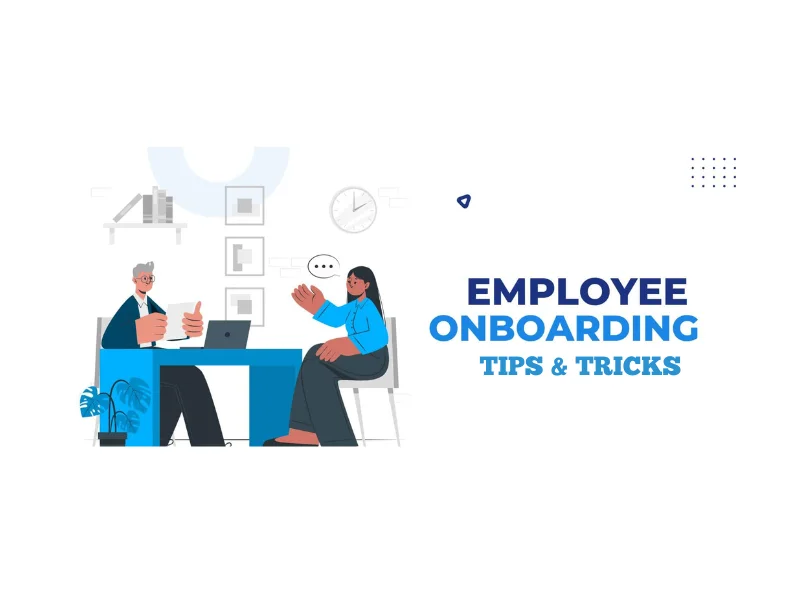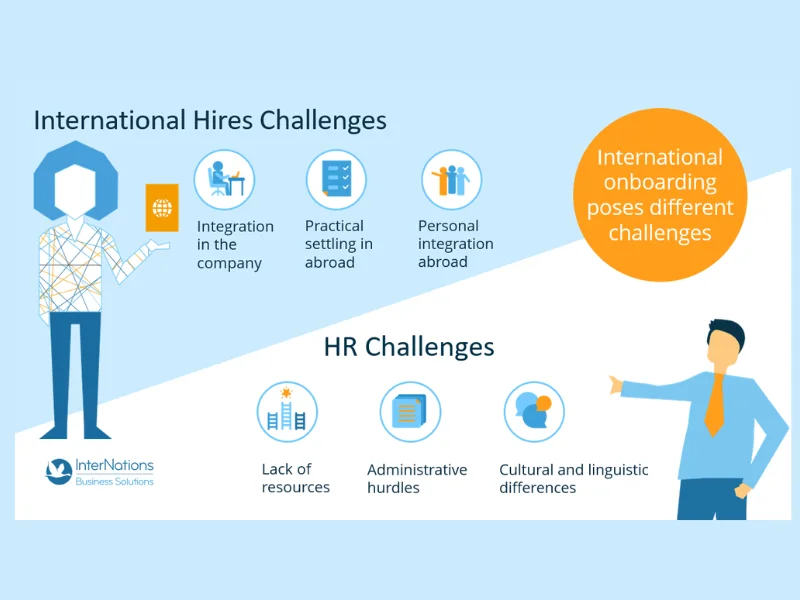The Ultimate Guide to Onboarding for Indian HR Professionals
Onboarding is a crucial process that sets the stage for a new employee’s success in a company. The onboarding process is thorough and strategic, ensuring that new hires feel welcome, understand their roles, and quickly become productive team members. This guide provides a practical, step-by-step approach to onboarding, with special considerations for handling large-scale onboarding in developing countries like India.

Why Onboarding is Important
Effective onboarding:
- Reduces Turnover: New hires are more likely to stay with the company when they feel supported and integrated.
- Boosts Productivity: A structured onboarding program helps employees hit the ground running.
- Builds Culture: Onboarding is a key time to instill company values and culture.
- Ensures Compliance: It’s crucial to make sure new employees understand and follow company policies.

Step-by-Step Onboarding Guide
Step 1: Pre-boarding
Example: Microsoft
Activities:
- Offer and Welcome Package: Once a candidate accepts the job offer, send a welcome package that includes the offer letter, company handbook, and a detailed onboarding schedule. Microsoft sends this package both physically and digitally.
- Paperwork: New hires complete necessary forms online, such as tax documents and direct deposit forms.
- Engagement: Keep new hires engaged with regular emails that provide useful information and build excitement for their start date.
Tips for HR:
- Legal Compliance: Make sure all documentation follows local laws and regulations, especially in countries with complex labor laws like India.
- Support: Provide clear instructions and assistance for completing forms, especially for areas with lower digital literacy.
Step 2: First-Day Orientation
Example: IBM
Activities:
- Welcome Session: Conduct a welcome session to introduce the company’s mission, vision, and values. IBM often includes a video message from the CEO.
- Office Tour or Virtual Introduction: Show new hires their workspace and introduce them to their team and key colleagues.
- IT Setup: Ensure that all necessary equipment and software are ready to use. IBM provides new hires with pre-configured laptops.
Tips for HR:
- Cultural Sensitivity: Make the orientation culturally inclusive. In India, consider including local customs and languages.
- Multilingual Support: Offer materials in several languages to cater to diverse linguistic backgrounds.
Step 3: Role-Specific Training
Example: Google
Activities:
- Structured Training: Provide training specific to the new hire’s role, including technical skills, compliance, and soft skills.
- Mentorship: Assign a buddy or mentor to help the new hire navigate their role and the company.
- Resources: Give access to online learning platforms with resources relevant to their job. Google uses gLearn for continuous learning.
Tips for HR:
- Localized Content: Adapt training to be relevant to the local market and context. Include local market dynamics and cultural nuances for employees in India.
- Culturally aware trainers: ensure trainers understand and respect different learning styles and communication norms.
Step 4: Integration and Socialization
Example: General Electric (GE)
Activities:
- Regular Check-ins: Schedule regular meetings with HR and team leaders to address any questions or concerns. GE does this through biweekly one-on-one meetings.
- Team Building: Organize activities to help new hires bond with their colleagues.
- Feedback: Use feedback systems to gather input on the onboarding experience. GE uses anonymous surveys for this purpose.
Tips for HR:
- Inclusivity: Create an environment where new hires from diverse backgrounds feel valued and included.
- Barrier Reduction: Address potential barriers like language differences or cultural nuances that might affect integration.
Step 5: Performance Evaluation and Continuous Support
Example: Amazon
Activities:
- Initial Performance Review: Conduct an initial review to assess progress and provide feedback. Amazon schedules these reviews within the first 90 days.
- Ongoing Learning: Encourage continuous learning through training programs. Amazon’s Career Choice program offers pre-paid tuition for in-demand courses.
- Career Pathing: Discuss potential career paths to motivate and retain new hires. Amazon provides clear career path frameworks.
Tips for HR:
- Realistic Expectations: Set realistic and culturally appropriate performance goals.
- Support Systems: Provide ongoing support and resources to help new hires succeed.
Microsoft’s Global Onboarding Program
Microsoft’s onboarding program is designed to be scalable and culturally adaptive. In India, the program includes:
- Localized Training: Materials that address local market conditions and cultural norms.
- Support Networks: Connecting new hires with local mentors who understand the regional business environment.
- Community Engagement: Encouraging participation in local community events and corporate social responsibility initiatives.
IBM’s Buddy System
IBM pairs new hires with experienced employees to provide guidance and support. This system is particularly effective in India, where:
- Cultural Integration: Buddies help new hires understand IBM’s corporate culture and local practices.
- Skill Development: Buddies assist with role-specific skills, making the transition smoother.
- Networking: Facilitates introductions to key stakeholders and team members, enhancing social integration.
Google’s Immersive Training
Google’s training programs are designed to be immersive and interactive. In India, Google has:
- Localized Content: Training that includes case studies and examples relevant to the Indian market.
- Interactive Platforms: Use of Google Classroom and other digital platforms to facilitate learning.
- Continuous Feedback: Regular feedback sessions to ensure training effectiveness and address any gaps.
General Electric’s Feedback Loop
GE emphasizes continuous feedback and improvement in its onboarding process. In India, GE has implemented:
- Regular Surveys: Anonymous surveys to gather feedback from new hires.
- Iterative Improvements: Using feedback to continuously improve the onboarding program.
- Leadership Engagement: Involving senior leaders to make new hires feel valued and engaged.
Amazon’s Career Pathing
Amazon focuses on career development to retain top talent. In India, Amazon:
- Clear Career Paths: Provides detailed frameworks showing potential growth opportunities.
- Skill Development Programs: Offers programs like Career Choice for developing new skills.
- Mentorship Programs: Pairs new hires with mentors to guide their career development.

Special Considerations for Employee Onboarding in Countries Like India
1. Cultural Sensitivity and Inclusivity
Cultural Training: Offer training to help new hires understand and adapt to the corporate culture. Recognize local festivals and customs to make the onboarding process more relatable.
Localized Content: Adapt onboarding materials to reflect local practices and languages. This shows respect and consideration for new hires’ backgrounds.
2. Infrastructure and Technology
Digital Accessibility: Ensure digital tools are accessible in areas with limited internet connectivity. Provide offline resources or physical documents if needed.
Local IT Support: Have IT teams familiar with local infrastructure to quickly resolve technical issues.
3. Language and Communication
Multilingual Support: Provide onboarding materials and training in multiple languages to cater to diverse linguistic needs.
Clear Communication: Use simple, clear language in all communications to avoid misunderstandings.
4. Legal and Compliance
Local Regulations: Ensure all onboarding practices comply with local labor laws. This is crucial in countries like India, where regulations can vary significantly.
Efficient Documentation: Streamline the process of completing paperwork, possibly with step-by-step guides.
5. Employee Well-being
Support Systems: Establish robust support systems, including mental health resources and employee assistance programs. Offer local resources to address specific needs.
Community Building: Organize team-building activities and social events to help new hires feel connected and valued.
The Value of a Well-Thought-Out Employee Welcome Kit
A well-designed employee welcome kit can significantly enhance the onboarding experience, especially in culturally diverse countries like India. Here’s why:
1. Creates a Positive First Impression
A thoughtful welcome kit shows that the company values its employees from day one. It sets a positive tone and helps new hires feel appreciated and excited about their new role.
2. Helps with Practical Needs
Providing essential items like a company-branded notebook, pen, ID badge, and IT equipment ensures new hires have everything they need to get started. This reduces first-day jitters and allows them to focus on their orientation and training.
3. Reinforces Company Culture
Including items that reflect the company’s values and culture, such as a welcome letter from the CEO, company merchandise, or materials that explain the company’s mission and values, helps new hires understand and connect with the company culture.
4. Boosts Employee Engagement
A welcome kit can include fun and engaging items like company swag, a welcome video from the team, or a gift card for a local coffee shop. These items can make new hires feel welcomed and part of the team.
5. Facilitates Smooth Onboarding
Providing all necessary paperwork and information in the welcome kit helps streamline the onboarding process. This can include an employee handbook, training schedule, and contact information for HR and their manager.
Example of a Great Welcome Kit: Microsoft
Microsoft’s welcome kits are known for being comprehensive and thoughtful. They include:
- Welcome Letter: A personalized letter from the CEO.
- Company Swag: Branded items like a t-shirt, mug, and notebook.
- Essential Tools: A laptop pre-loaded with the necessary software, log in details, and IT support contact information.
- Cultural Materials: A guide to the company’s mission, values, and culture, as well as information about employee resource groups.
Conclusion
Onboarding is a critical process that lays the foundation for a new employee’s journey within a company. For Fortune 500 companies, a well-structured onboarding program translates into higher retention rates, increased productivity, and a cohesive company culture. This guide has detailed a practical, step-by-step approach to onboarding, emphasizing the importance of cultural sensitivity, infrastructure readiness, clear communication, legal compliance, and employee well-being.
Incorporating a thoughtful welcome kit adds significant value, especially in culturally diverse regions like India, by creating a positive first impression, addressing practical needs, reinforcing company culture, boosting engagement, and facilitating a smooth transition.
By implementing these comprehensive strategies and best practices, HR professionals can create an onboarding experience that not only helps new employees feel welcomed and prepared but also sets the stage for their long-term success. This, in turn, benefits the organization by fostering a motivated, well-integrated, and high-performing workforce. Effective onboarding is not just a process—it is an investment in the future success and growth of both the employees and the company.
